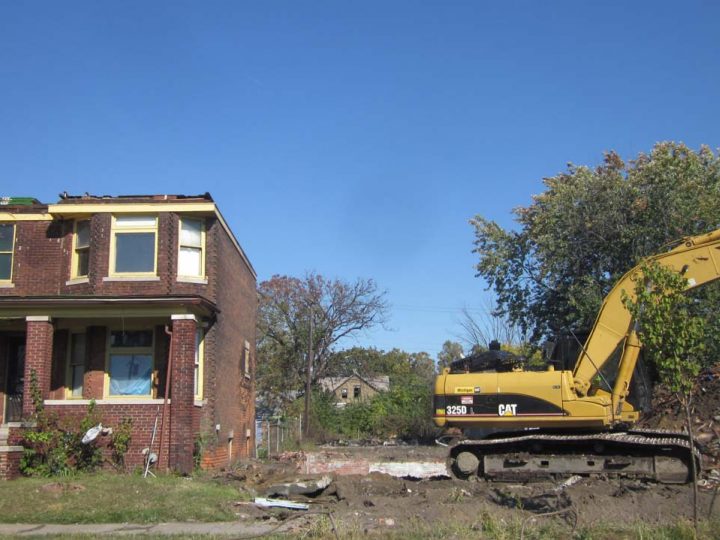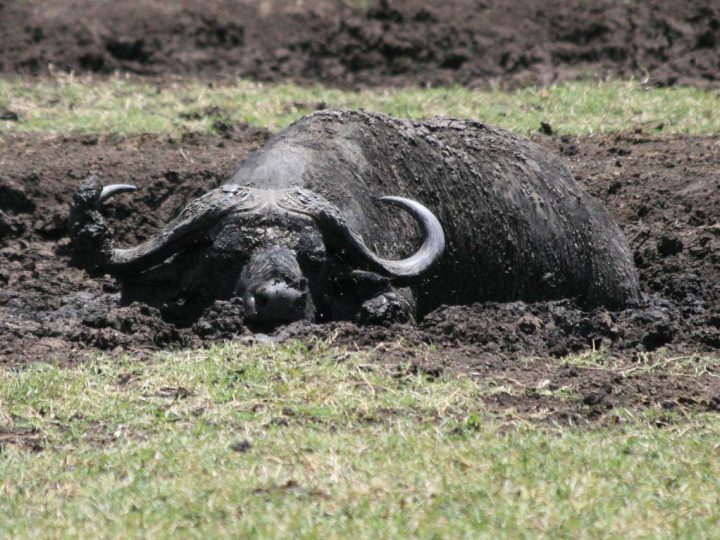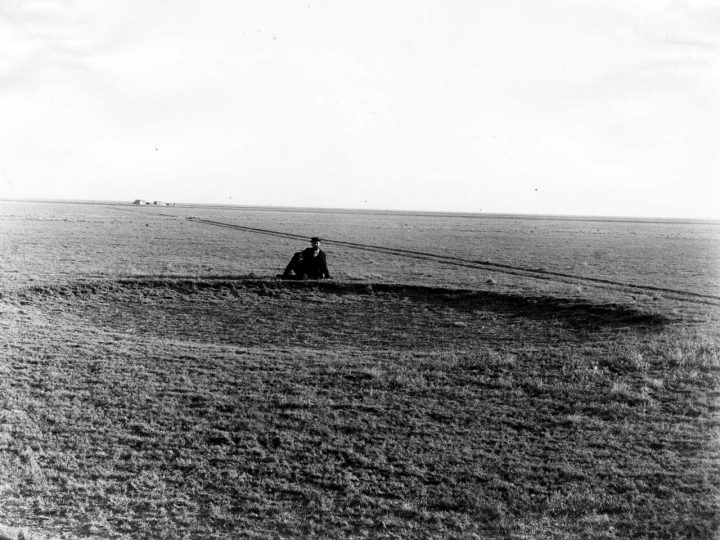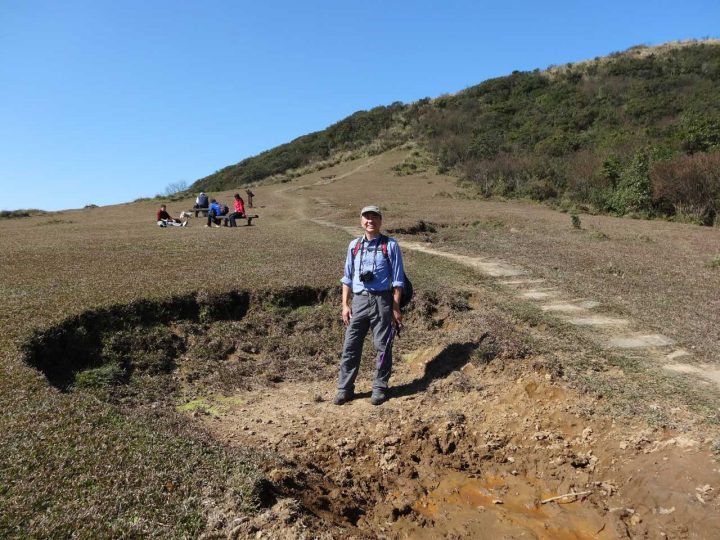
Buffalo Wallows
When buffalos wallow, they create ecological potholes, something we can learn from here in Detroit.
Photo © Detroit Future City
Wallows are celebrated by ecologists for the diversity they provide.
American Buffalo are a keystone species of the tallgrass prairie. Although Michigan was really only inhabited by the Buffalo before the 1870s, one of their habits offers an interesting concept for vacant land in Detroit—especially when we consider Detroit’s open space network and the mosaic or ecosystem level impact of the wallows.
The buffalo are picky eaters—they only eat grasses. Within the tallgrass prairie where buffalo roam, though, grasses and forbs, or flowering herbaceous plants, grow side by side. Ecologists describe Buffalo as ‘Ecological Lawn Mowers.’ By eating all of the grasses, and removing them from competition, Buffalo allow the forbs to both emerge and flourish in some scattered spots. This creates diversity within the tall grass prairie.

Photo © Detroit Future City
Although the eating is helpful, the wallows that the buffalo create are even more helpful, from an ecosystems perspective. Basically, the buffalo roll around in the mud or dust. Ecologists speculate that this could be to protect themselves from insect bites, or to relieve an itch. What is certain is that they roll around—or wallow—compacting the soil with their heavy bodies, and leaving an impression on the earth.
The depressions are something like Ecological Potholes that hold both rain water and run off. Because they are a different ecological condition than the rest of the tall grass prairie, they are able to host different plants (the forbs!).
As the buffalo roll around, they also collect mud in their fur—over time, deepening these ‘ecological potholes’. In places where the buffalo have been gone for more than 100 years, the wallows persist as pockets of diversity within the prairie ecosystem.
As herd of buffalo roam the prairie, they reuse these existing wallows, deepening the impressions, allowing for the storage of more rainwater, and also for thirstier plants to live in small communities within the prairie.
The Field Guide is excited about Buffalo Wallows as an example of a system that introduces botanical diversity in a strength-through-mosaic strategy. Wallows are celebrated by ecologists for the diversity they provide. At home, a buffalo wallow would be about twice the size of an 8 Mile Rain Garden. Remember, the benefits of the biodiversity you are creating in your own lot and within your neighborhood connects into a city-wide mosaic of resources for our plant and pollinator friends.








